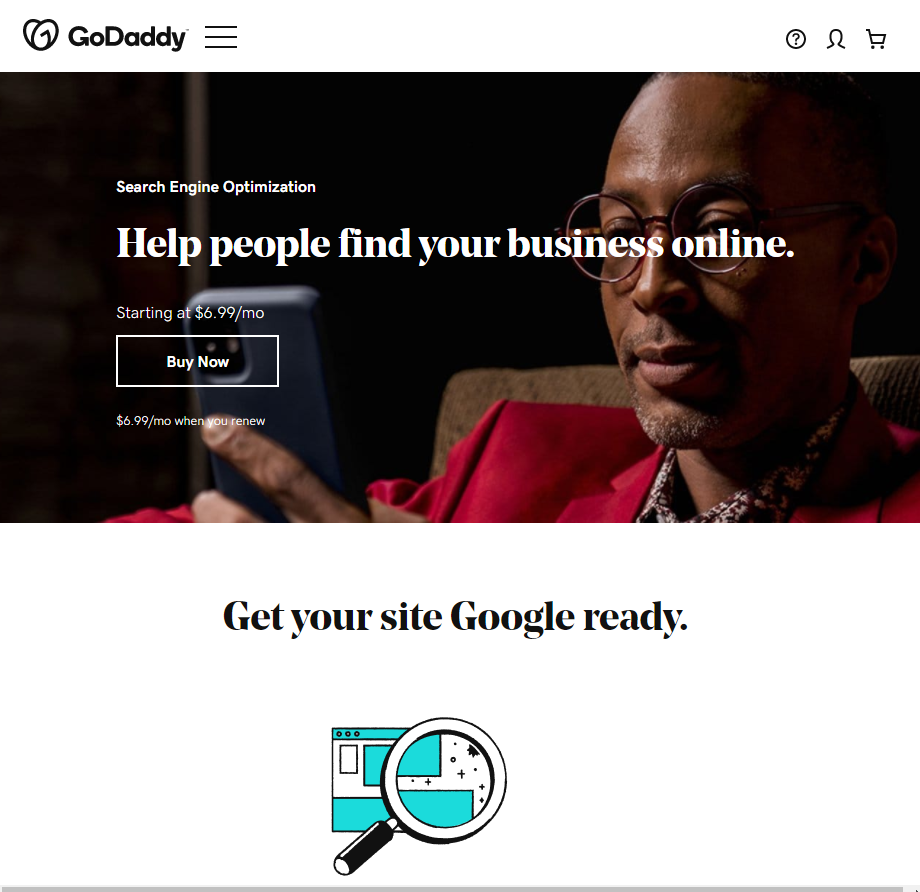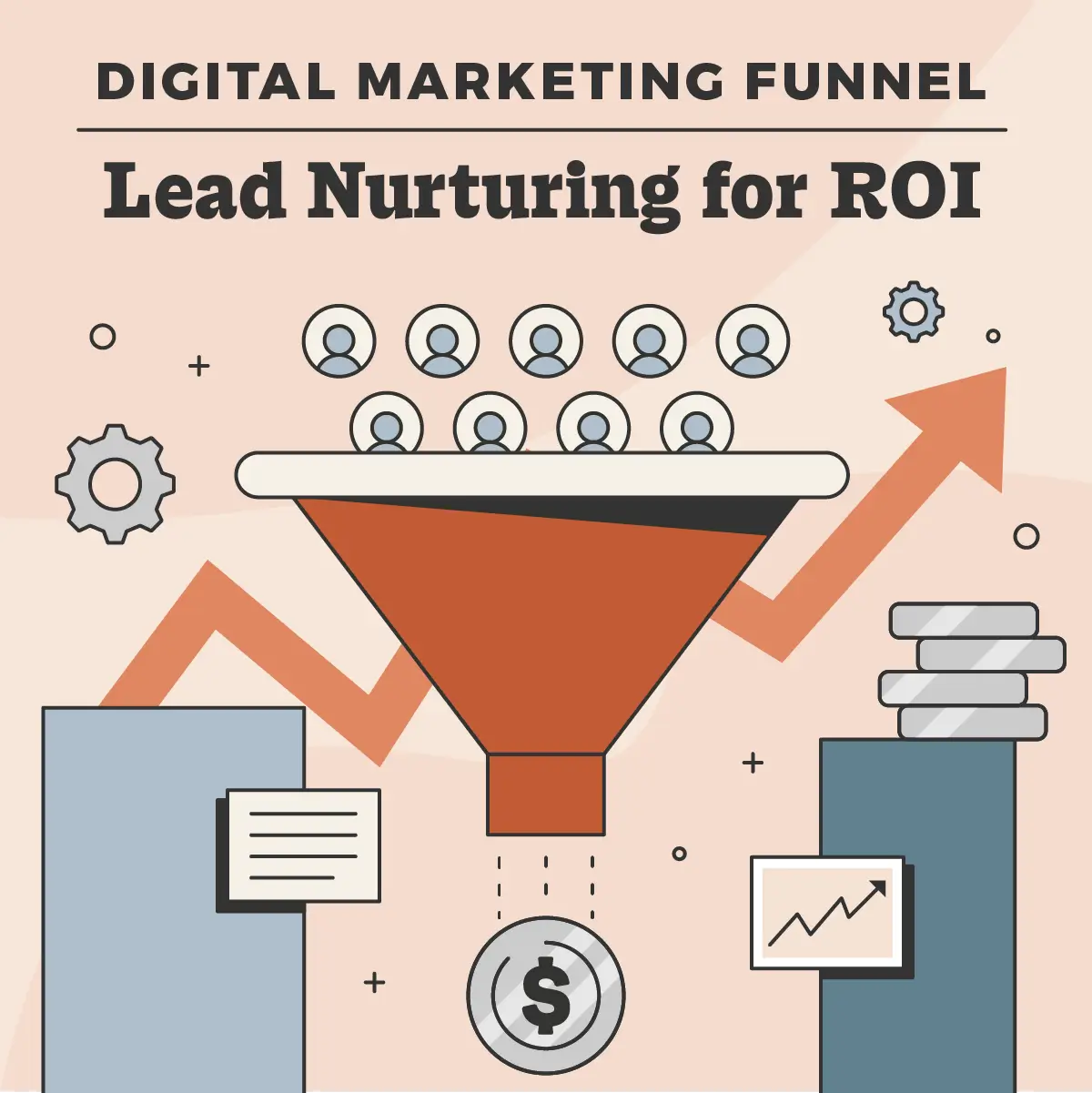Top 10 SEO Best Practices for GoDaddy Sites

We know what you’re thinking—SEO is SEO—but we are also here to tell you that couldn’t be further from the truth. Yes, SEO does have its similarities and shared practices, but the truly successful will tell you that what works on one website domain or style might not work on another. That’s why GoDaddy site owners need to focus specifically on optimizing their site based on what’s proven to be successful for other GoDaddy websites and users.
Search engine optimization is integral to your success. There's no other way to say it. Over 91% of all search traffic goes to the first page of search results. Not only that but that first listing? It gets as much as 32.5% of all traffic. So, if your SEO doesn’t measure up, your brand is seriously missing out on some visibility.
Some people make the mistake of assuming that their out-of-the-box website builders and forward-thinking hosts offer all the solutions that they need for things like SEO—that's not the case at all. In this guide, we’ll cover 10 of the best practices for GoDaddy sites that are trying to optimize for SEO, including everything from how to optimize content to getting input from your audience directly.
And, when it comes to getting that input, our live chat agents here at Smith.ai have the upper hand in delivering the conversation your customers deserve so that you don’t have to worry about one more thing. That way, you can start focusing on these SEO tips.
Tip #1: Choose content that matches search intent
If you’re designing for your audience, you’re naturally going to want to choose to provide them with results that match the different types of intent they could have. There are four main types of search intent that are what most people know, and those are the ones that you should be focusing on. Here are the four examples of search intent and what they entail:
- Transactional: Customers are here to buy, no questions asked, and they’ve already done their homework.
- Commercial: This is in between thinking about the “thing” and actually researching the item or service to see whether I wanted to buy it in the first place. It’s a good idea to keep search intent on your mind when building a website.
- Navigational: Searchers are seeking a specific app or website by name. They already know what they want, they just prefer to use a search engine to get there.
Informational: This is the most basic search. Whenever a user is just looking for information, this type of search can go a long way. It is all about an educational/informational intent, though, so there is no malicious intent or ill will to be had.
Tip #2: Use the SEO tools and resources from GoDaddy
As with any good website builder, GoDaddy has its own collection of tools and resources to assist you with search engine optimization. These shouldn’t be the only tools that you use, but they should be on your list to add to your arsenal. GoDaddy offers plenty of assistance that can get you started on the right path. And who better to tell you exactly what their sites can do in terms of optimizing for search than the GoDaddy team themselves?

You won’t use them all and some might prove to be more beneficial than others, but you should take the time to explore them and figure out what they can do for your brand’s SEO efforts.
Tip #3: Optimize for local search
The numbers don’t lie. As many as 2/3 of all smartphone users are more likely to purchase a brand that has a mobile site or app that’s locally optimized or tailored to local content. You need to make sure that if you have a local offering, your site is optimized for local search in every way possible. This includes using location-based keywords, making relevant local references, and other ways that you can incorporate location information.
If you don’t have a local offering, this might not be as beneficial to your SEO efforts as it is for local brands. However, it’s essential for brands that do have a local presence. Without local optimization, you might as well not even bother. People are doing more and more searches from mobile devices, for mobile businesses and services, and without local search, many local brands are getting left in the dust.
Tip #4: Submit to Google Search Console
One critical step of building and optimizing your website is one that often goes unchecked or only partially completed. You need to build an XML sitemap, either on your own, through the GoDaddy interface, or by using a custom XML builder plugin. Then, you need to take this sitemap and submit your website to the Google Search Console. This will enable it to be included in indexing by search engines.

Essentially, you’re letting the search engines know that your website exists. Even though it’s technically “existed” since the moment you put it up and started working on it, the finished product is what search engines want to see. Once your site is ready to go, take your XML and go submit to the right search engines and tools so that everyone knows your website is ready to deliver on whatever your audience needs.
Tip #5: Optimize titles and meta descriptions
There is something to be said for taking advantage of all the tools you’re given in your site editor. Titles, title tags, and meta descriptions are not just tools that let people know what they’re going to get when they arrive on your site. They're tools that help search engines rank you in terms of what content you’re offering, which search queries you’re addressing, and whether you have the right information for the user. If you don’t optimize titles and meta descriptions, as well as other details, you’re missing a huge opportunity.
Not only that but there are some instances where improperly optimized (or entirely not optimized) titles and tags actually result in lowering the ranking of a site or reducing its credibility as a professional brand. After all, if you can’t be bothered to optimize a few tags, why should search engines be bothered to give you traffic?
Tip #6: Publish 100% unique content
And when we say 100% unique, we mean it—Google doesn’t like duplicate content. Even if you do it by accident, you could be seriously penalized and if nothing else, it will do nothing for your search engine rankings. It’s harder the more content you create, but it can be done if you are careful and have a solid content creation strategy in place. Everything has to be unique, including:
- Title tags
- Meta tags and descriptions
- Landing pages
- Product pages (eCommerce)
- Category pages
- Image alt text
If any of these appears to be duplicated across your website, you’ll lose major points. In severe instances, websites have been blacklisted for not publishing unique content or using unique tags and descriptions. It’s not worth the risk.
Tip #7: Optimize page speeds

(Google PageSpeed Insights is ideal for measuring page speeds and other data.)
It doesn’t matter how “good” your business is or how “cool” your website looks—if it doesn’t load quickly, easily, and across multiple devices without issue, it’s not going to matter. Make sure that you take the time to choose a good hosting provider and perform a site audit to check your page speeds and identify other performance issues that could be slowing things down.
Remember to use lite formatting tools and editors that allow you to deliver a robust UX without compromising your site speed. Stick to simple layouts and user-friendly navigation, and compress images whenever you can to save load times. You can even choose between a mobile-first and a mobile-friendly site design, depending on how versatile you want your site to be. The important thing is to pay attention to the performance reports and fix any areas where speed could be lacking.
Tip #8: Use internal and external links
There are two goals accomplished here. Internal links make it easy for you to self-promote without being super overt about it. External links allow you to appear authoritative and reliable because you are sharing useful relevant content that is from another source. Both have their place in your SEO strategy and your branding. You should try to get 2-3 internal links into every blog post or landing page and at least 2-3 external links, too, but make sure that the links are valuable.
For example, a financial services business isn’t going to get credibility for linking people to Big Money Mike’s YouTube channel because no one has even heard of the guy. If, however, they link to a detailed article on Investopedia that’s relevant, they could easily prove their sense of authority and reputability as a source of information. Make sure that you’re staying up to date on linking best practices, too, and use keywords to attach links rather than just hyperlinking or leaving a URL in the content.
Tip #9: Improve the user experience on the site
SEO is about a lot more than keywords. User experience plays a large part in how successfully a site ranks for SEO and other factors. If you are seeing a lot of people bouncing back to the search results from your site, Google will take that to mean that the individual didn’t find what they needed. Then, your rankings will start to fall. Of course, what if you have exactly what the user needed, but they failed to find it because of a poor UX (user experience) or difficult navigation?

Take the time to consider what your audience wants and how people use the Internet today. Many already have their own preconceived notions of how things should look, where things should be, and how businesses should function online. Therefore, if you ask them what they want, they’ll gladly tell you exactly how to deliver. You can also use analytics and performance metrics to help identify weak spots and make improvements.
Tip #10: Ask people what they want
You can do all the research in the world, but the best way to improve your SEO and user experience overall is to ask people what is lacking. Use solutions like the live chat services from Smith.ai to reach out to customers and get feedback on information they’re missing or things they want to know. Use that information to create an FAQ page, and even to improve your landing pages and blogs. After all, when you give people exactly what they want, the search rankings will come on their own.
Live chat is changing the way that businesses connect with their audience. Not only is it allowing you to step up and offer better, more instantaneous service to those who need it, but it’s allowing people to feel more connected and help your brand find the best strategies for things like search engine optimization. Search engines rank sites based on how well they deliver to their audience, so this can play a huge role in your success.
Streamline your SEO and customer communications with the virtual agents from Smith.ai
A partnership with our team puts you in the position to capitalize on the best aspects of automation and streamlined business processes. Not only will you be able to embrace AI and the future of customer service, but you’ll be able to do it all without having to actually do any of it.
That’s right. Our dedicated live chat agents know how busy you are and will act as the face of your brand to field all kinds of inquiries and customer concerns, and then relay the information back to you so that you can use it to improve customer satisfaction and boost your SEO efforts at the same time.
You can learn more when you schedule a consultation to discuss what our live chat agents can do for you, including scheduling and new client intake, as well as 24/7 live website chat, Facebook message answering, and more. You can also reach us at hello@smith.ai or (650) 727-6484.
Related Posts

















.svg)
